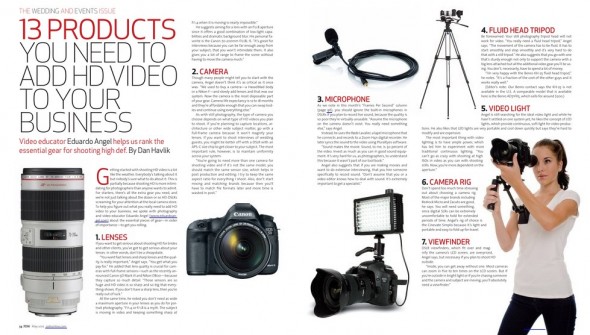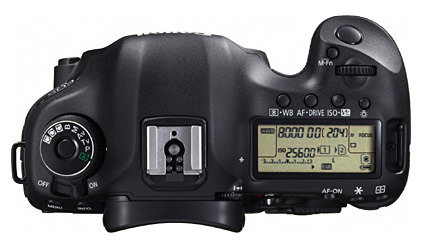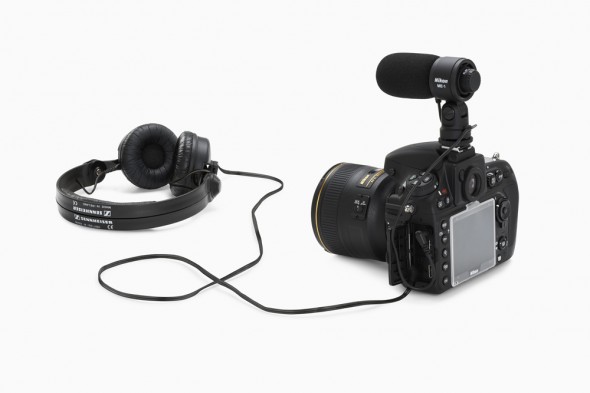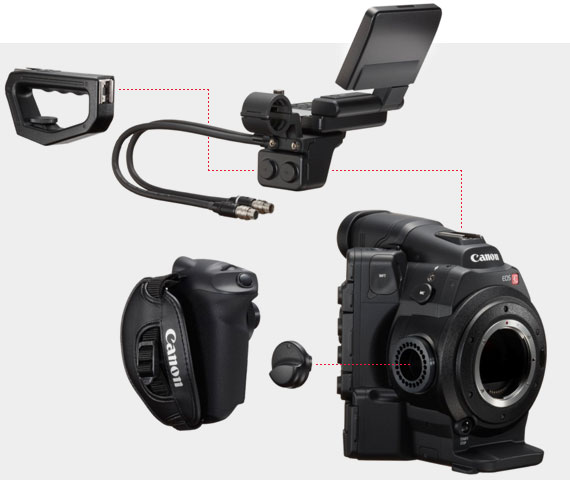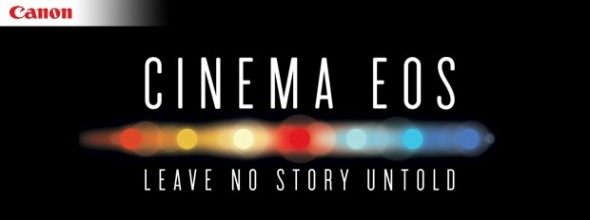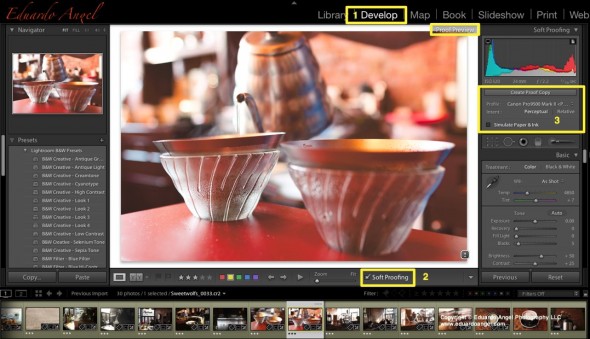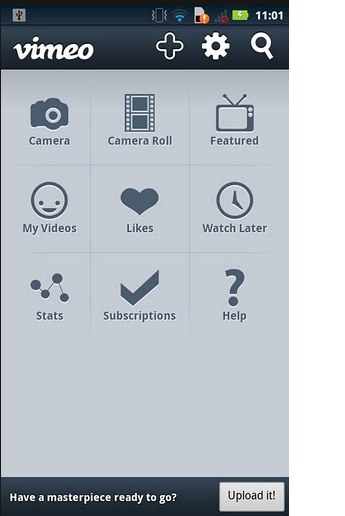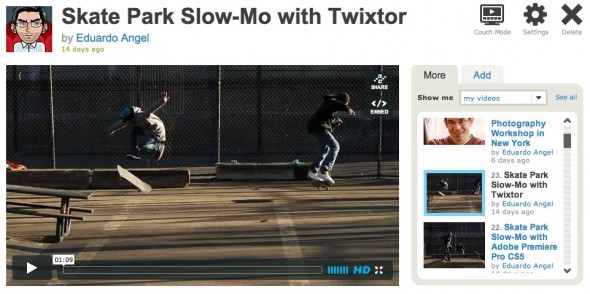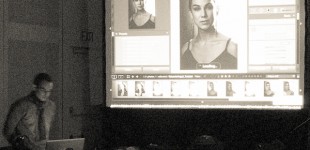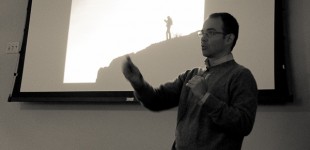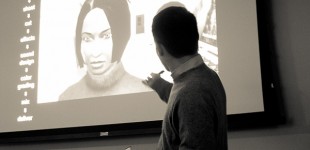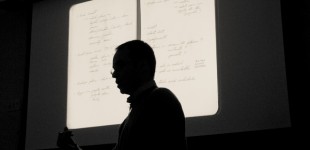Video
Reliable RAID Systems, an overview.
Professional photographers and filmmakers, are always (and should be) concerned with storage devices, such as hard drives to create reliable backups and efficient workflows. All hard drives will fail eventually, that is why using RAID (Redundant Array of Inexpensive Disks) systems is often our recommended strategy. A RAID is a set of connected hard drives designed to store digital files and information in a much more reliable manner. Most current RAID units can also monitor a Hard Drives’ system health, fan, and power supply and warn users when there’s a potential failure.
There are several different levels at which a RAID system can be configured. In the photo and video industry, we generally use RAID levels 0, 1, 5, and 6. One way to remember them is: Fastest (0), Mirror (1), Safe (5), and Safest (6).
Interested in learning more about RAID systems? Then read this article we recently wrote for Canon’s Digital Learning Center to better understand how they work, their differences on performance, compatibility and size. Don’t wait until it’s too late to establish a good backup strategy! If you need help, don’t hesitate to contact us.
Video
Conversations with Friends.
For this week’s “Conversations with Friends,” (Episode 7), we continue our dialogue with Ted Kawalerski, professional photographer and director, about his own transition from still photography to documentary and corporate filmmaking, and the challenges involved.
Ted also shares more light on his upcoming Family Life Academy video project, located in the South Bronx in New York City as well as his views on retirement.
As always, please share with us your feedback and thoughts.
Video
Catching up with the coolest tech news. Summary.
I’ve been on the road for the past 2 weeks, with very limited internet access. Today, I finally had some time to catch up with the latest technology news (1683 articles and 268 emails). These are, in my opinion, the most interesting and relevant announcements:
• Filmmaker Jeff Desom took Alfred Hitchcock’s famous 1954 film “Rear Window” and turned it into a single panoramic time-lapse video.
Two years ago I set up my camera to take a picture every 15 seconds for 36 hour and edited 698 still images into a 29-second video.
• Recently I was interviewed by PDN about the “13 Products you need to add HD Video to your business.” Do you agree or disagree? Did we miss something? We would love to hear your comments below. The article is also available on PDN’s May print issue.
• Blurb posted a cool article about how we use the Book Module on Adobe Lightroom 4. If you are interested in exploring this option don’t miss one of our upcoming seminars. Here’s the sample book (about wine!) we created.
click here to continue (more…)
Photography
Get set for AIPAD. Starts today.
If you have ever been to an AIPAD show in New York City, then you know that ‘tis the season to be excited for the 32nd anniversary of this once-a-year photography showcase.
Starting today and until April 1, 2012, photographers, art dealers, hobbyists and international art enthusiasts will gather together for the latest in art photography at the Association of International Photography Art Dealer’s (AIPAD) Photography Show, returning to the Park Avenue Armory in the Upper west side.
The Armory was built as a military facility and designed by the world’s leading artists and architects in 1861, including Charles W/ Clinton (later a partner of Clinton & Russel), Louis Comfort Tiffany, Stanford White Herter Brother, Pottier & Stymus, and architects of the Astor Hotel. The main hall, measures 55,000 square feet…that is a lot of room for a gallery, wouldn’t you say? It remains as one of the few unimpeded spaces remaining in New York.
This year is going to be huge, with 75 of the world’s leading art galleries contributing all different kinds of photographic work including contemporary, modern, abstract, 19th century, photo-based art, digital video…. you name it!
In addition to the amazing variety of artwork that you will encounter, there are also panel discussions and seminars from some of the world’s most influential photographers and curators including a conversation between Dutch photographer, Rineke Djisktra and Jennifer Blessing, curator of photography at the Solomon R Guggenheim Museum.
“Highlights of this year’s photography exhibition include work by Julia Margaret Cameron, Ansel Adams, André Kertész and Henri Cartier-Bresson, as well as a variety of modern and contemporary showcases such as those of Linda McCartney and Karen Knorr and an exclusive exhibition by David Zwirner gallery of a new body of work by Philip-Lorca DiCorcia, in which he endeavours to find a balance between documentary and theatrically staged photography. There is also an exhibition of personal cards sent from photographers such as Lee Friedlander and Jerry Uelsmann.” Read the press release. to see more featured speakers and artists.
For only $40, you can get a four-day pass, or $25 for a one-day pass. Even better, students can pay $10 for a one-day pass. I would highly recommend this show to anyone who is in the least bit interested to understand past and present trends in photographic mediums.
For more details, visit www.aipad.com.
Video
Conversations with Friends.
On the sixth Episode of our “Conversations with Friends” we sat down with Ted Kawalerski, professional photographer and director, to talk about his transition from still photography to documentary and corporate filmmaking after a 35-year career.
Ted talked about finding great partners for his digital cinema projects, and shared with us some of the rewards and joys and technical frustrations he has discovered during his transition.
We discussed Ted’s upcoming Family Life Academy video project, the importance of sound, the video editor’s role, and storytelling. In fact, we covered so many interesting topics that we decided to edit Episode 6 as Part 1, and Episode 7 as Part 2.
For this Episode we used Rode Lavalier Mics and Ted mentioned his preference for Rode Shotgun mics.
To celebrate the Spring’s arrival, Eduardo enjoyed a “sparklingly mild and fruity” Paulaner Hefe-Weissbier natural wheat beer with a “delicate yeast flavour, gleaming orange colour, and uniform cloudiness.” Ted drank about a gallon of tap water.
Here are the links to Episode 05, and Episode 04.
Please add your comments below! Are you enjoying our Conversations? Did you learn something new today?
Video
Canon EOS 5D Mk III, 5D3, 5D Mark III has arrived.
Ok. Let’s start from the beginning: We are looking at a 22.3 Megapixels, Full Frame (36 x 24mm) CMOS sensor system, powered by a DIGIC 5+ processor. Check this article if you want to fully understand the differences between the DIGIC 4 processor on the 5D Mark II, and the new DIGIC 5+ on the 5D Mark III.
Some of the highlighted features include:
• Dual card slots (1 SD/SDHC/SDXC and 1 CF). Sorry, no XQD on this one. What is awesome about the dual cards is that you can a) record the same data to both cards, or b) record different file sizes or types to each card, or c) automatically switch to the second card when the first card is full. That’s great when shooting long interviews, or concerts, for example.
• HDR with +/- 3 stops
• Improvement in noise reduction by 2 stops
• Multiple exposure mode
• 63 zone dual metering system
• +/- 5 stops (the 5D Mark II has only 3 stops)
• iFCL metering system with a 63-zone dual-layer sensor
• File Formats: AVI, RAW, JPEG, H.264, MOV, MPEG-4
• Full HD video recording: 1080/30p, 24p, 25p; 720/60p, 50p; 480/60p, 50p
All the typical features are here: Minimum Shutter Speed (30 sec), Maximum Shutter Speed (1/8000 sec), 100% coverage viewfinder, etc, etc, etc. As expected, durability on the Magnesium Alloy chassis has been improved including a 150,000-cycles shutter, and water and dust additional resistance.
These are the specs that REALLY got my attention:
• It is now possible to check two images side-by-side for sharpness, exposure, etc at different aspect ratios (1:1, 4:3, 16:9) with the new “Comparative Playback” function.
• There’s a Q button that will process RAW to JPG on camera.
• The new camera shares the same exact 61-point High Density Reticular AF system found in the EOS 1D-X (for half the price).
• There’s an iPod-like button to make changes in the movie mode without adding noise to the clips. Smart!
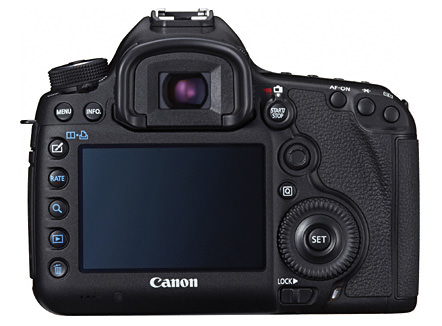
• The 5D Mark III uses the same batteries (LP-E6) as the 7D and 60D.
• The ISO war keeps getting better. The Mark III offers ISO 100-25600 (expandable up to ISO 102,400) for stills, and 100-12800 (up to ISO 25,600) for video. Wow! Now we really could use an iPad as a Key Light!
Here’s an interesting set of high-res JPEGs samples shot at ISO 50 to 102,800. The test was performed under low level halogen lights, which are perhaps the most challenging to digital sensors and noise reduction systems.
Video Features.
There are several serious improvements on this front:
•There are a couple of new video Modes: “Silent and Low Vibration,” but I don’t recall seeing them on the prototype I tested.
• The video resolution is Full HD (1920×1080), and the video format is the same H.264, which I personally love because it runs natively on Adobe Premiere Pro and Lightroom 4, and plays extremely well with online sharing platforms like Vimeo and YouTube.
• The recording buffer has been extended from 12 minutes to 29 minutes and 59 seconds. The 4GB limit is finally over.
• Following Nikon’s D800 improvement, we now have a 3.5mm headphone jack for live audio monitoring and a Wind Filter. Other ports include USB 2, HDMI, Mic Input, and Wireless.
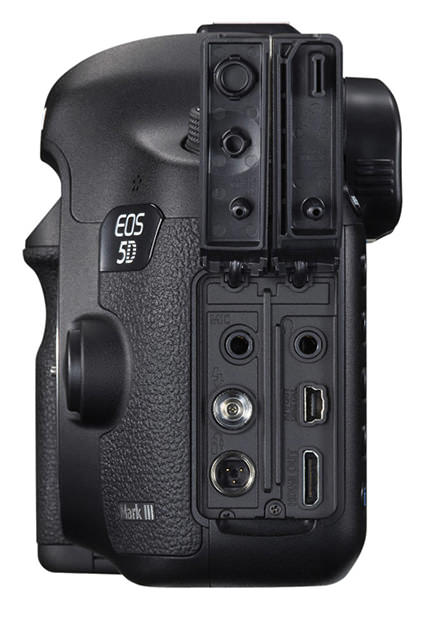
• The LCD screen is virtually the same 3.2″ 1.04 million as the Nikon’s D800. With a screen this size photographers are out of excuses for not using Histograms the way they should.
• There’s a built-in info menu while shooting video, which comes super handy to quickly check important settings like White Balance, Resolution, ISO, Picture Style, etc.
Regarding audio, the changes are pretty exciting:
“The camera includes manual audio level control with 64 levels, adjustable both before and during movie recording. There is also an automatic audio level setting, or sound recording can be turned off entirely. A wind filter is also included. Sound can be recorded either through the internal monaural microphone or via an optional external microphone through the stereo mic input.”
—Click to continue (more…)
Video
Stunning tilt-shift video at the Carnival in Rio.
An absolutely stunning Tilt-Shift/Timelapse video of the Carnival in Rio de Janeiro, Brazil. Shot by Sydney photographer and filmmaker Keith Loutit and Jarbas Agnelli.
Video
Nikon D800 officially announced.
After countless “accidental leaks,” Nikon announced two new cameras: the D800 and D800E. The D800E is identical to the D800, except that it skips the anti-aliasing filter, which technically will offer sharper photos, but might also introduce color moire and chroma noise. According to Nikon, the “D800E is ideal for photographers who can control light, distance and the subject to mitigate the increased risk of moiré and false color.”
UPDATED: Adorama is allowing preorders on Nikon D800 ($3000 ships next month) and D800E ($3300 ships in April). First orders in, first boxes out. Hurry up!
Video Features
The D800 video features are almost identical to the D4, for half the price.
• 1080p/29.97fps and 720p/59.94fps
• Two memory card slots: Compact Flash (UDMA Mode 7) and SD/SDHC/SDXC (UHS-1)
• USB 3.0
• Mini-HDMI, 3.5mm headphone jack for live audio monitoring, 3.5mm powered stereo microphone jack, PC sync and 10-pin remote socket
Interestingly, both the rear LCD and an HDMI-connected external monitor can display simultaneously.
Interesting Features
• 35.9 x 24mm (FX Format) self-cleaning CMOS sensor
• 36.3-megapixels
• ISO range of 100-6400 (expandable to 25,600)
• 51-point AF system, 20% more sensitive than the D700
Video
Using an iPad as a Key Light.
Rodney Charters, Drew Gardner and Lan Bui playing with the new Canon EOS C300 camera. To test the camera’s 20,000 ISO capability, they shot a low-light scene using an iPad for the key light and an iPhone for the fill light. This is way too cool.
Test Technical Notes:
Camera: Canon C300
ISO: 20,000
Lens: Canon 100mm f/2.8 IS L lens
Aperture: f/2.8
Shutter: 1/25th (360 degree)
Canon Log Gamma
Video
Meet Canon’s C300, in person.
This week (January 25th) Abel Cine New York is showing Canon’s brand new EOS C300. Abel is also hosting a similar event next month (February 16th) in Los Angeles. More than just another cool camera, the C300 systems confirms Canon’s commitment to the filmmaking industry. The systems comes in two flavors, one with EF mount (EOS C300) which takes your good ol’ Canon still lenses, and another one (C300 PL) with a PL mount. To learn more about this system and what it means for photographers shooting video read my previous post.
Also this week, Canon is showing in Chicago a series of short films shot with the C300, as well as “Behind the Scenes” interviews with the directors and crew members.
Video
Exclusive Canon Cinema EOS screening.
On January 26, Canon will be hosting “an exclusive Cinema EOS Event” in Chicago. They will present a series of short movies shot with the brand new, game changing EOS C300 camera, as well as “Behind the Scenes” interviews with the directors and crew members. Canon’s amazing technical staff will be available to answer all your geeky questions.
There will be two screenings (morning and afternoon), and registration is required. Please share your experience with us if you attend.
Video
Adobe Lightroom 4 HDSLR video support explained.
UPDATE March 6, 2012. The full version of Lightroom 4 is available now and Adobe cut the price in half: The full version (which used to cost $299) will now be $149. The upgrade version will only cost $79. The beta version (which was downloaded more than 250,000 times) will expire on March 31, 2012.
My birthday was yesterday, and the present arrived this morning. Lightroom 4.0 (public beta) FULL VERSION is now available as a free download from Adobe’s website.
Important things to consider:
• You do not need a serial number and the beta version will not update your current Lightroom 3 (or earlier) catalog.
• The public beta comes in three flavors: Mac (OS X v10.6.8 Snow Leopard) or v10.7 Lion), Windows 32-bit, and Windows 64-bit. Make sure you download the correct version. Each compressed download is about 400MB.
• File support for Lightroom 4 beta, is exactly the same as in Lightroom 3.6 and Camera Raw 6.6.
• The public beta will expire on March 31, 2012, when the final Version 4 becomes available.
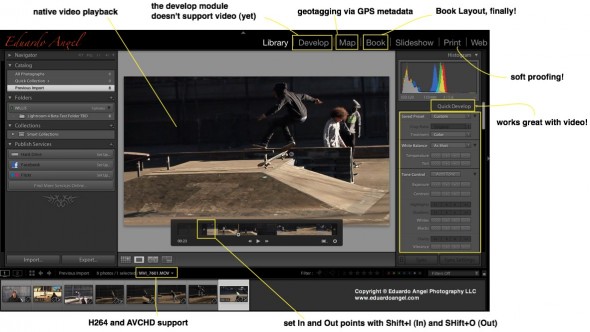
Here are the new features, organized from super awesome to awesome:
• HDSLR video support (full details below)
• Soft proofing (found under the Develop Module, not the Print Module as one would expect)
• Photo book layout
• Email directly from Lightroom (works with Gmail, Yahoo, Hotmail, and AOL)
• Publish videos directly to Facebook or Flickr
• Geo location (via GPS metadata) with the Map Module
• Enhanced DNG workflows
• Adobe Revel (Carousel) export workflow
• Additional local adjustments including Noise Reduction and White Balance
• Powerful new Shadow and Highlight controls
• Simplified basic adjustments
Video
Regarding Video Support this is what Adobe has to say:
“Lightroom 3 added the ability to import, manage and tag video files but as the popularity of video capture increases it’s important to provide a single, robust workflow solution that can support all of your imaging needs regardless if they’re still images or video captures. Lightroom 4 adds native playback for a wide variety of formats from mobile phones to high end DSLRs.”
Here’s what I have to say: In version 3, we were able to import video files along with our still images, but to see the clips Lightroom needed to access Quicktime. Now we can play the files inside of LR. Also, by using similar shortcuts from well established NLE (non linear editing) software applications like Final Cut Pro and Adobe Premiere Pro, now we can set In and Out points directly in Lightroom. Shift+I (In) and Shift+O (Out).
Video
5 free mobile Vimeo Apps to edit HD Video.
I recently got a Tablet to more efficiently maintain this blog by using the very good WordPress app, among other apps for photography and digital cinema.
Today my life got a free upgrade with Vimeo’s new apps for iPad, Android, Kindle Fire and Windows Phone. I have been waiting for almost a year since the iPhone app was released, but it was worth the wait. Now I’ll be able to upload, manage and watch my videos right from my phone (highly unlikely since the battery sucks), and Tablet.
The Android app requires Android version 2.3 (Gingerbread) or later. Some of the features include:
• Upload raw or edited footage in HD or SD
• Pause/Resume videos and uploads
• Replace existing videos
• Edit tags, titles, credits, descriptions and privacy info
• Share on Facebook, Tumblr, Twitter, WordPress, email or SMS
• Add your clips to Groups, Channels and Albums
• Download your Vimeo videos to your Camera roll
• Watch videos from the Vimeo Inbox and Watch Later queue
• Stats on daily plays, likes and comments
According to Vimeo, 15% of its traffic now comes from mobile devices. 18% of this blog’s visits are from mobile devices and 30% of those devices are iPhones.
Video
How much is Slow-Mo worth? Twixtor vs. Adobe Premiere Pro.
Tuesdays Tutorials.
We recently purchased a Canon EF 70-200mm f/2.8L II IS USM lens, and tested it by shooting stills and video at a skate park in Manhattan. We liked some of the footage we got, and decided to quickly play with some slow motion effects in Adobe Premiere Pro CS5
.
One of our friends at Abel Cine suggested that we look into Twixtor, and we did. Here are the side-by-side videos, so you can judge the quality by yourself.
Adobe Premiere Pro CS5
RE:Vision Twixtor
The video was shot with a Canon EOS 7D, at 1270×720 and 60fps. The shutter was anywhere between 1/125th and 1/500th of a second. All the clips were slowed down to 20%. We feel that Premiere Pro did a decent job, but Twixtor definitively is the way to go. Unfortunately, the standard version is $330, and the Pro version is $600. Is anyone using another preset for slow motion with a similar (or better) quality?
Video
Same but different – Intro to Digital Cinema.
As a professional photographer, transitioning into the HDSLR Cinema world for the past 3 years has been a fascinating journey. I would like to share the five main similarities and five main differences I have encountered. Read through, I can guarantee it will save you some time.
Similarities
• White balance. Think Jpg. You can tweak the White Balance in post, but you are very limited to what you can do. Instead of using Auto White Balance, set a specific color temperature (5200K for example), especially if shooting with more than one camera.
• Exposure is very critical. Pay special attention to the highlights. It is time to use again that good old Light Meter or get one specifically designed for HDSLR shooters like Sekonic’s L-308DC. Like White Balance, do your best to get it right on camera, not in post.
• Camera Settings. We are still using ISO, aperture, and shutter, but because of the frame rate, the shutter is not really a variable factor anymore. Now, we also need to add fps (frames per second), picture styles, and other interesting things to the mix.
• Composition. We go back to the basics. Rule of thirds, symmetry and patterns, texture, depth of field, viewpoint, and cropping. Luckily, that has not changed. If you have a good eye, you are good.
• Lighting. All cameras are light-tight boxes that admit controlled light only through a lens. Just because we can push sensors to 25,000 ISO does not mean you are telling a story with light. You need to light.
Differences
• Lighting. Wait! Wasn’t this one of the similarities? Yes, it is also a big difference. Remember strobes? They turned into hot lights and continuous lights. Also, keep in mind that now the camera moves, and the light should work for several angles.
Video
Watson MD. New ways to see data.
Data is not useful until it becomes information, and on this fascinating 30-second commercial the flow of information is presented in a unique way by seamlessly combining medical visualizations, scientific literature, live action photography, pathogen analysis, and more. Guillermo Navarro, the same cinematographer who shot Night at the Museum, the Hellboy series, and the fantastic Pan’s Labyrinth, used two RED cameras and one ARRI Alexa camera to capture over a million images for this project.
“We shot insects, livestock, plants and other elements live on greenscreen. We licensed medical procedures for the young actor in the spot to get medical visualizations of the boy’s actual anatomy – CAT scans, X-rays, brain stem eye visualizations, and more; photos of his family members to illustrate medical history, medical literature showing research on actual potential causes and conditions of the scenario, images of pathogens, viruses, allergens and bacteria at the root of the possible causes, and more.”
Motion Theory’s Director Mathew Cullen Visualizes Supercomputer’s Thinking Process for IBM’s “Watson M.D.”
Incredibly, none of the images in the spot are computer generated! According to another source, production on “Watson M.D.” took four weeks and included consulting with medical practitioners, a three-day live-action shoot, developing the animation engine and integrating visual effects, and editing.
Video
Weekend Wrap up.
What a great weekend! Tons of new friends, and a few exciting announcements at the PDN PhotoPlus Expo in New York. My Adobe Lightroom and Digital Cinema seminars went great, big thanks to Victor Ha from Cinevate for his awesome hands-on demo on High Production Value. The 2-day HDSLR Workshop at B&H was really fun. We had a great group of photographers transitioning into digital cinema!
Thank you all for the great feedback and support. Here are some pictures.
If you are interested in HDSLR Cinema, check my upcoming workshops in Washington D.C. (Nov. 5-6), and Los Angeles (Nov. 11-12).
Video
Can’t miss seminars at PDN’s PhotoPlus Expo 2011.
Last week, my great friends Ted Kawalerski, Matt Stanton, and Justin Katz helped me shoot this 45-second video to promote my upcoming seminars at PhotoPlus Expo in New York City.
On Friday, October 28, from 8:45 to 11:45 a.m., I’ll be co-teaching “Portrait Lighting Techniques & Lightroom Workflow” with Bobbi Lane. Expect a very energetic and intense seminar.
The same day, from 3:45 to 5:45 p.m., I’ll be presenting “Intro to Digital Cinema.” This 2-hour class is specifically designed for photographers transitioning into HDSLR video, and my goal is to provide enough tips and resources so that attendees will be able to start shooting video by 6 p.m. that same day. I guess I love challenges. As the title says, this is an introductory class.
To truly understand all the technical concepts, filmmaking techniques, and upcoming trends of this amazing digital revolution, I suggest you attend one of my upcoming 2-day PDN HDSLR Video Workshops in New York (Oct. 30-31), Washington D.C. (Nov. 5-6), and Los Angeles (Nov. 11-12).
Let me know if you have any questions!

